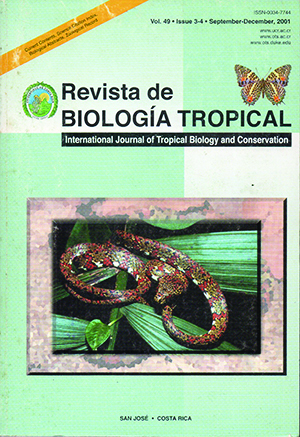Abstract
Entomopathogenic fungi of the genus Cordyceps were sampled in the foothills of the Colombian Amazon region (450 – 600 msnm altitude, January and May, 1998, i.e. dry and wet seasons, respectively). Healthy and Cordyceps-parasitized ants from a nearly pristine, a naturally disturbed and a human-disturbed forests were collected on 100 quadrants (1 m2) per forest. Litter, shrubs and trunks were explored as substrates, and samples were gathered in vertical strata from 50 cm to 2 m high. Azteca was the predominant ant genus in near pristine forest whereas Camponotus, Pheidole and Crematogaster were dominant in disturbed forests. In the naturally disturbed forest we found 759 individuals of Cordyceps unilateralis and 69 of C. lloydii var. binata parasitizing Camponotus spp. (Formicidae: Formicinae), whereas C. kniphofioides var. ponerinarum and C. australis were found only in six cases infecting the ants Paraponera clavata and Pachycondila crassinoda (Formicidae: Ponerinae). In the human disturbed forest it were found 34 individuals of C. unilateralis on Camponotus. In the near pristine forest we did not find parasitized ants. The Camponotus spp. ants parasitized by C. unilateralis and C. lloydii var. binata were found predominantly in the substratum foliage up to 1 m. It was concluded that the incidence of Cordyceps–ant interactions is not influenced by the conservation status of the forest. Instead, relative humidity and presence/absence of host ants appear to be key factors. Also, the microspatial distribution of the interactions seems to follow a definite pattern. This work observations support the hypothesis on coevolution of dispersion mechanisms in Cordyceps and ant pheromonal codes.##plugins.facebook.comentarios##

This work is licensed under a Creative Commons Attribution 4.0 International License.
Copyright (c) 2001 Revista de Biología Tropical
Downloads
Download data is not yet available.


